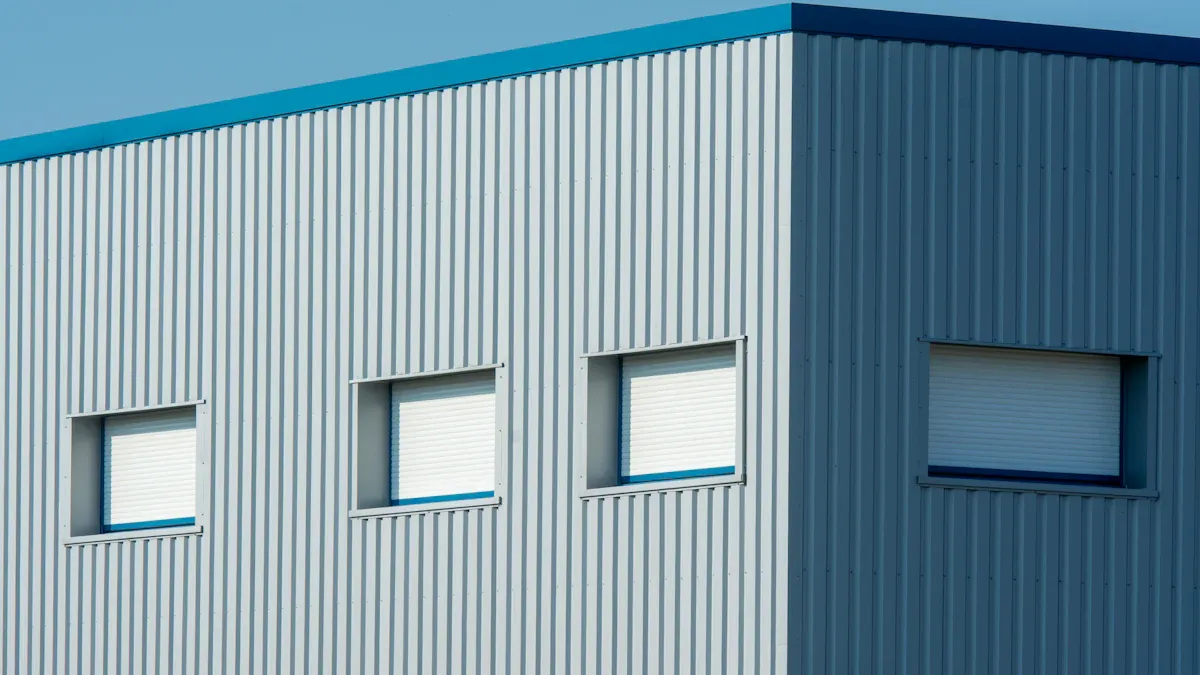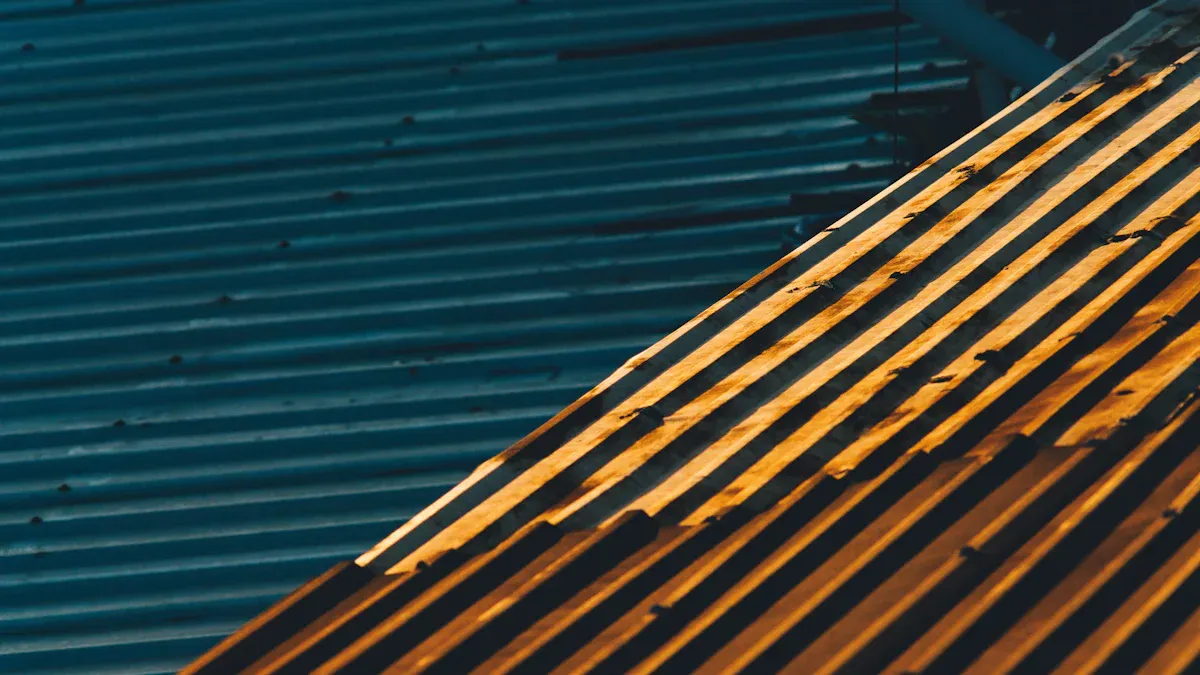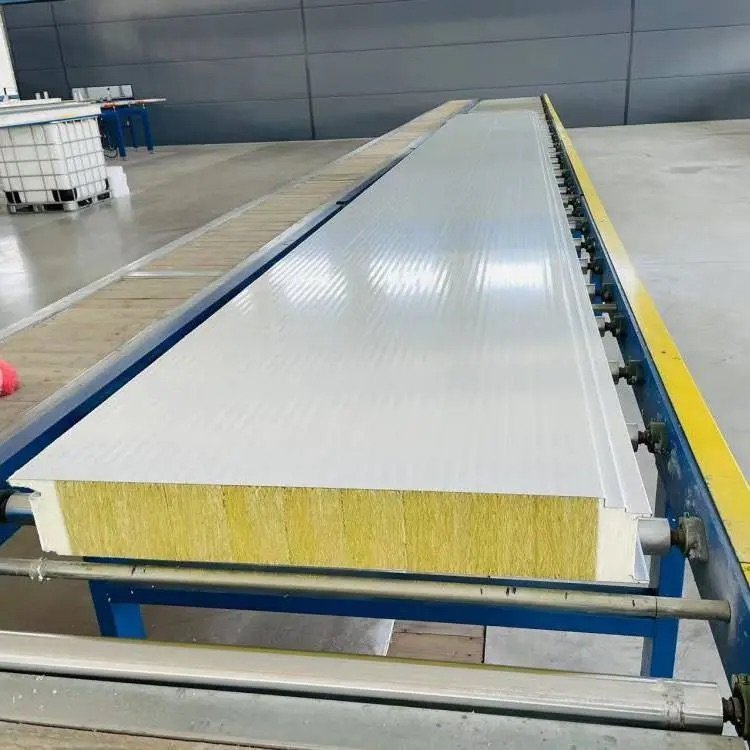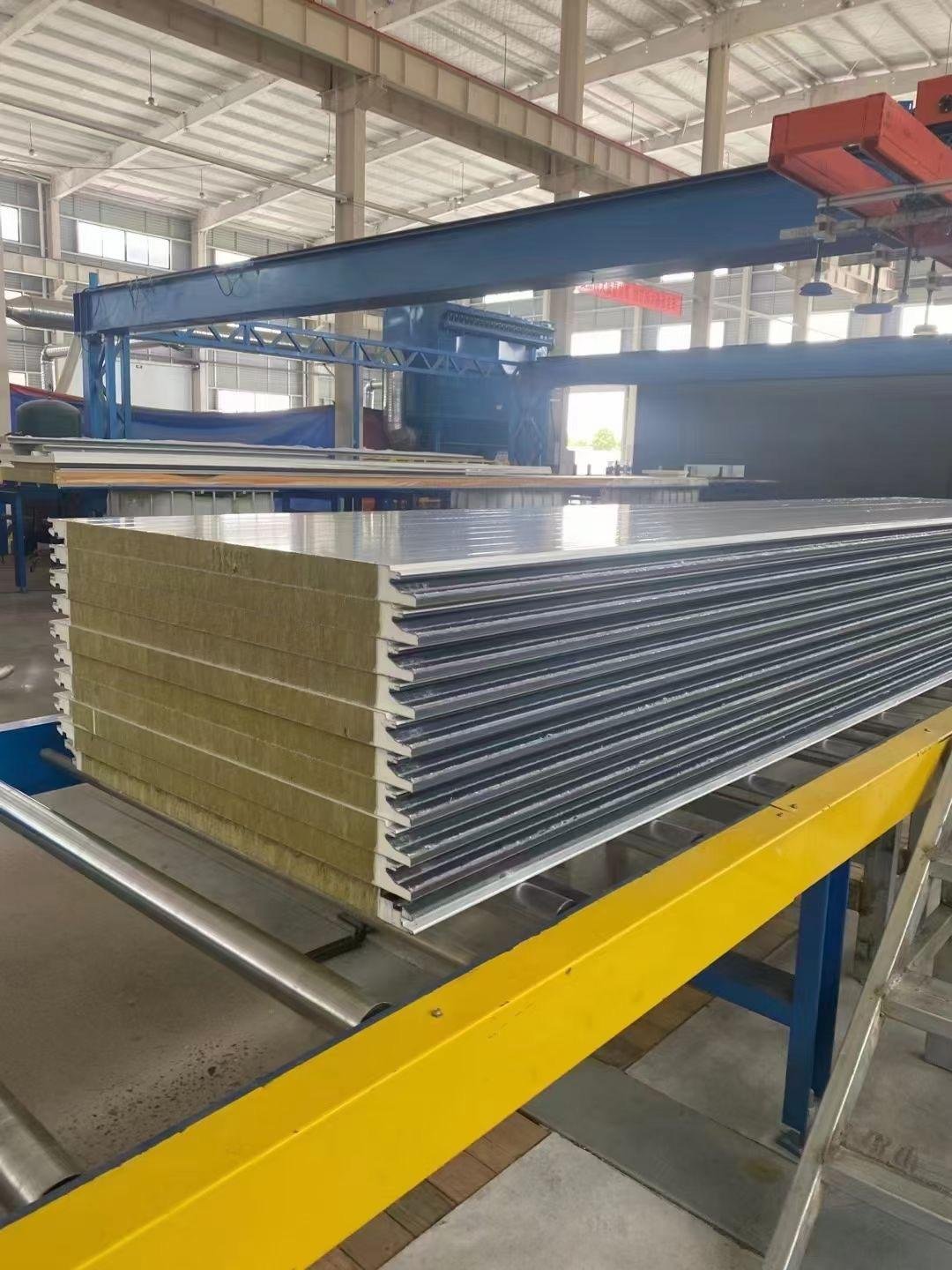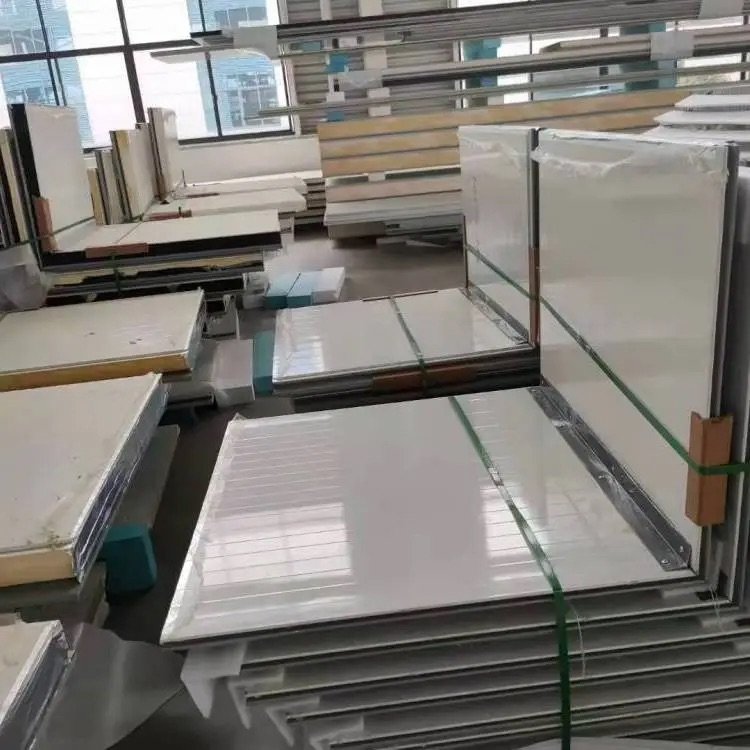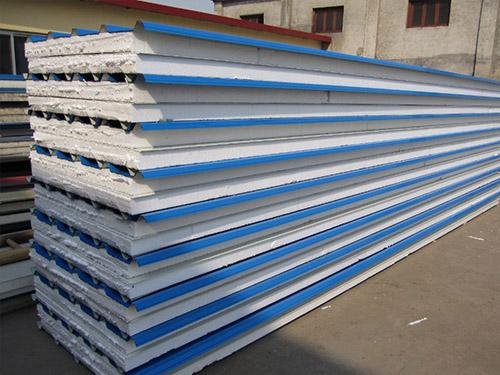
You can safely use EPS sandwich panels for roofs. They are light, keep heat in or out well, and cost less. These panels are now popular in many building projects. Here are some reasons why:
Many factories and stores use EPS panels for great insulation.
More people want eco-friendly buildings, so roof panels are used more.
New technology makes these panels stronger and better against bad weather.
They are useful for many purposes if they meet building rules and environmental needs.
Key Takeaways
EPS sandwich panels keep homes warm in winter and cool in summer. This helps save money on energy bills.
These panels are light and simple to put in place. This saves time and reduces work costs during building or fixing projects.
EPS panels last long and are good for the environment. They cut down waste and help with eco-friendly building because they save energy.
Checking and fixing gaps often is important. This keeps EPS panels working well and lasting longer on roofs.
EPS panels can be used in many ways. But, check local weather and rules to make sure they are safe and work well.
Benefits of EPS Sandwich Panels for Roofs
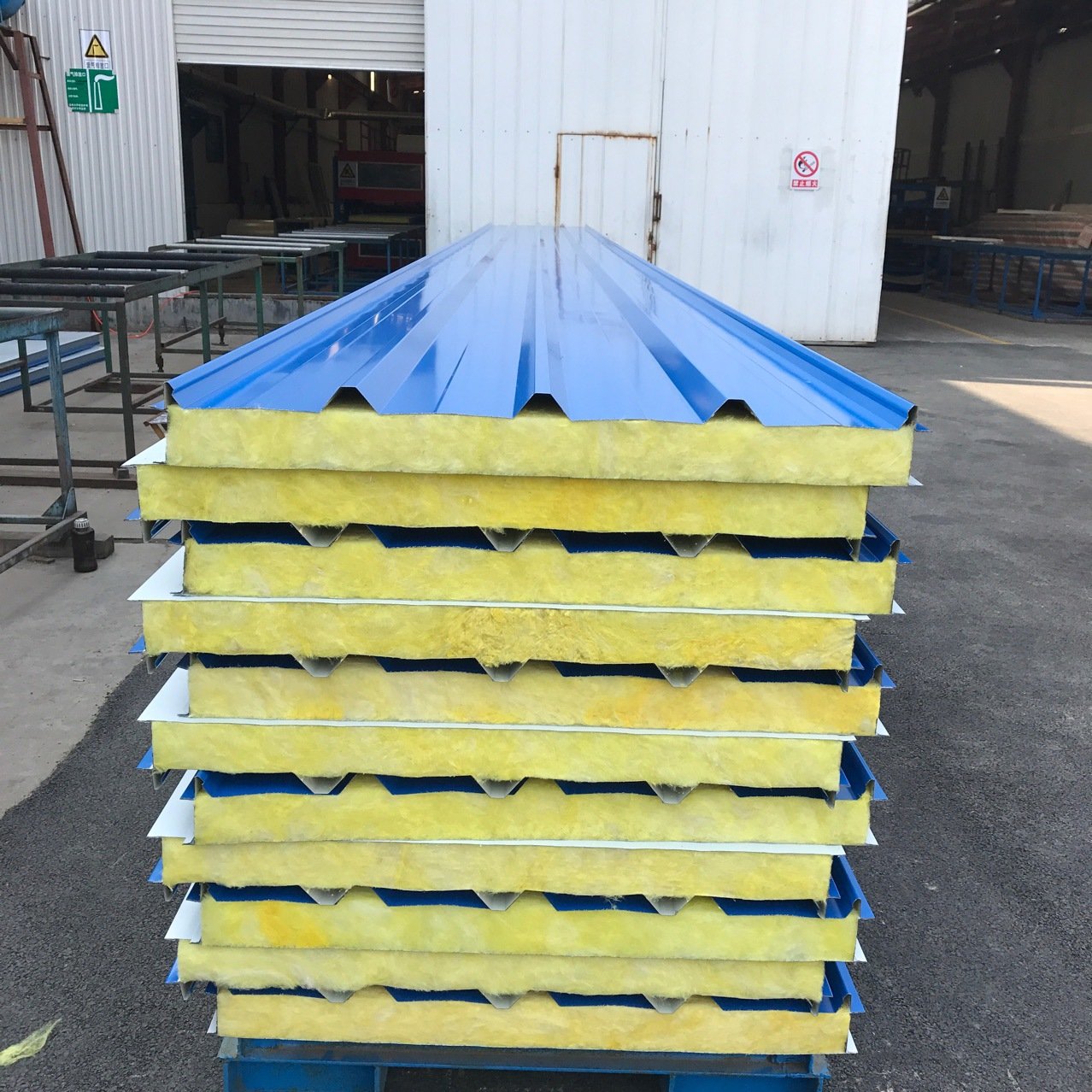
Thermal Insulation Properties
EPS sandwich panels keep heat in or out very well. They use expanded polystyrene (EPS) foam, which insulates effectively. For instance:
EPS roof panels have an R-value of R-30, offering great insulation.
The foam itself gives an R-value of R-4 per inch, which is dependable.
Unlike fiberglass insulation, which often fails, EPS panels work as promised. They block air well, keeping your home warm in winter and cool in summer. This helps lower energy bills.
Lightweight and Easy Installation
EPS sandwich panels are very light. The foam core weighs between 12 kg/m³ and 28 kg/m³. This makes them lighter than most roofing materials. Their low weight makes moving and installing them easier.
You can install these panels fast, saving time and money. Their light design also puts less strain on buildings. This makes them good for new buildings or renovations. Compared to heavier materials like PUR panels, EPS panels are simpler to use and cheaper for big projects.
Durability and Longevity
EPS sandwich panels are strong and last a long time. They resist water, pests, and damage, staying in good shape. Even in tough conditions, they hold up well. With care, they can last for many years.
Their strength makes them eco-friendly since they need fewer replacements. This reduces waste and supports green building practices.
Cost-effectiveness for Roofing Projects
EPS sandwich panels help save money on roofing projects. They are affordable and a great option for budget-friendly builders. These panels cost less than traditional roofing materials but still work well.
Here’s how they save money:
They make buildings use less energy, lowering utility bills.
Their light weight means less labor and faster construction.
They need fewer materials for support, cutting extra costs.
These reasons make EPS panels a smart choice. Picking them can save money over time while staying on budget.
Eco-friendly and Energy-efficient
EPS sandwich panels are good for the environment and save energy. They lower energy use and reduce harm to nature. Their insulation keeps buildings warm or cool with less energy, cutting greenhouse gases.
The table below shows their energy and eco benefits:
Scenario | Annual Energy Use (MWh) | Energy Savings (%) | GHG Emissions (tons) | Primary Energy Consumption (TJ) |
|---|---|---|---|---|
Scenario 1 | 1.91 | 63% | 3,500 | 57 |
Scenario 2 | 1.95 | 62% | 4,700 | 81 |
Using EPS panels helps build eco-friendly roofs. They meet modern energy rules and lower emissions. This makes them a great pick for green building projects.
Limitations of EPS Sandwich Panels for Roofs
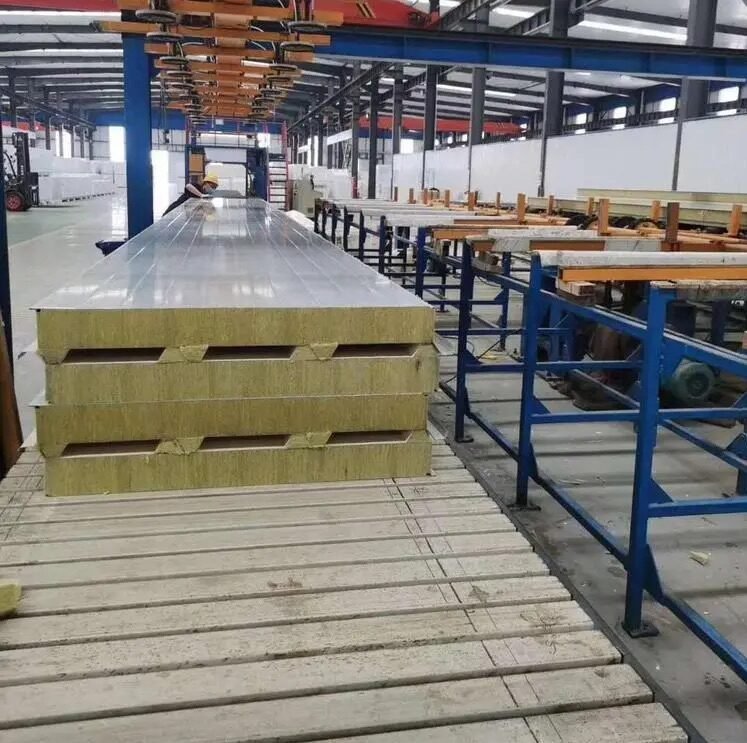
Concerns About Load-bearing Strength
EPS sandwich panels might not hold heavy loads well. Their light weight makes them easy to install but less strong. This can be a problem for industrial roofs or snowy areas.
Tests show that EPS panels can bend under heavy pressure. Thicker panels may deform more easily. The table below shows important test results:
Evidence Description | Key Findings |
|---|---|
How panels bend and break under pressure is important. | |
Parameter identification study | Load performance changes due to material hardening differences. |
Core deformation observations | Heavy pressure can bend the core, causing problems. |
Material bimodularity effects | Compression and stretching affect how strong the panels are. |
These results mean you should check your project’s needs before using EPS panels.
Challenges in Harsh Weather
EPS sandwich panels may not do well in bad weather. Strong winds, heavy rain, or extreme heat can cause issues. For example, high winds might loosen panels if not secured tightly. Sunlight over time can also damage the outer layers.
If you live in a place with hurricanes or very hot weather, extra protection is needed. Adding reinforcements or coatings can make the panels last longer.
Fire Safety and Resistance Issues
Fire safety is a concern with EPS sandwich panels. The foam core can catch fire and release harmful smoke. Some panels have fire-resistant treatments, but they may not meet all safety rules.
Always check local fire codes before using EPS panels for roofs. You can combine them with fireproof materials to improve safety. Fire safety should always come first when planning your roof.
Maintenance and Upkeep Requirements
To keep your EPS sandwich panels working well, regular care is important. Taking care of them helps them last longer and work better. Follow these simple tips to maintain your roof panels:
Inspect Often: Look at your roof panels twice a year. Check for cracks, dents, or loose parts. Fixing small problems early stops bigger, costly repairs later.
Keep Them Clean: Dirt can build up on the panels. Use a soft brush or low-pressure water to clean them. Don’t use strong chemicals that could harm the protective layer.
Seal Gaps: Weather changes can create gaps between panels. Use sealants to close these gaps. This keeps insulation strong and stops water from leaking in.
Tip: Check your panels after storms or heavy snow. This helps you find and fix damage quickly.
Watch for Rust: If your panels have metal parts, check for rust. Use anti-rust treatments to protect them from damage.
Check Fireproofing: Make sure fire-resistant coatings are still in good shape. Reapply them when needed to stay safe.
Skipping maintenance can make your panels wear out faster. By following these steps, you can help them last longer and work better. Regular care saves money on repairs and keeps your roof strong and protective.
Uses of EPS Sandwich Panels in Roofing

Roofing for Homes
EPS sandwich panels work great for home roofs. They keep your house warm in winter and cool in summer. These panels are light, so they are easy to add to old or new roofs. They help lower energy costs by keeping indoor temperatures steady.
You can pick from different colors and styles to match your home. They last a long time, making them a smart choice for saving money. If you live where the weather is mild, these panels are a good, eco-friendly option for your roof.
Roofs for Factories and Stores
EPS sandwich panels are perfect for factories and stores. They are often used in warehouses, shops, and factories because they insulate well and are lightweight.
Insulfoam, a top company, has made EPS products for over 60 years.
These panels keep big spaces at the right temperature, saving energy.
They are quick to install, helping businesses save time and money.
EPS panels are a budget-friendly choice for industrial and commercial roofs. They meet the needs of large buildings while staying affordable.
Modular and Prefab Buildings
EPS sandwich panels are popular in modular and prefab buildings. They are light, save energy, and are easy to move, making them ideal for these structures.
Evidence Type | Details |
|---|---|
Energy Efficiency | EPS panels lower energy use for heating and cooling. |
Thermal Insulation | They provide strong insulation, helping save energy. |
Market Growth | Modular building systems are growing at 8% yearly. |
Structural Applications | EPS panels are used in walls and roofs of industrial buildings. |
Global Market Trends | Modular construction is increasing in North America, Asia-Pacific, and Europe. |
If you’re building modular structures, EPS panels are a smart roofing choice. They are eco-friendly and fit with global green building trends.
Temporary Roofing Uses
EPS sandwich panels are great for temporary roofs. They are light, easy to install, and affordable. These features make them perfect for short-term projects or emergencies. Whether for a shelter or covering a site, they offer good protection.
Why Use EPS Panels for Temporary Roofs?
Fast to Install: EPS panels are quick to set up. Workers can handle them easily without big machines. This saves time during urgent jobs.
Budget-friendly Option: Temporary roofs need cheap materials. EPS panels are low-cost but still work well.
Reusable Panels: After taking down a roof, you can use the panels again. This helps reduce waste and supports eco-friendly practices.
Tip: For outdoor events, add a waterproof layer to protect against rain.
Common Uses
EPS sandwich panels are used in many temporary roofing situations:
Emergency Shelters: They help build fast shelters for people after disasters. The insulation keeps the inside comfortable in bad weather.
Covers for Construction Sites: Builders use them to shield tools and workers from rain or sun.
Event Roofs: For fairs or outdoor events, these panels make strong and nice-looking roofs.
Things to Consider
EPS panels work well for temporary roofs, but check their performance for your area. In places with strong winds or heavy snow, extra support may be needed. Regular checks keep the panels safe and working well.
EPS sandwich panels make temporary roofing easier. Their flexibility and usefulness make them a top choice for short-term needs.
Installation Process for EPS Sandwich Panels

Getting the Roof Framework Ready
Before putting up EPS sandwich panels, you must prepare the roof framework. A strong and steady framework helps the panels last longer and work better. Use materials that are stiff but light, so they are easy to handle. The framework should also be strong enough to hold the panels without adding too much weight. Prefabricated methods are the best choice because they save time and reduce mistakes.
Feature | Description |
|---|---|
Makes handling and installing panels easier on-site. | |
Strength/weight ratio | Ensures panels can hold loads while staying lightweight. |
Prefabricated construction | Prefab systems make building faster and more accurate. |
Make sure the framework is clean and level. This step stops panels from being misaligned and ensures they fit securely.
Putting Up and Securing the Panels
When the framework is ready, start installing the panels. EPS sandwich panels are light and simple to handle, making installation quicker than traditional roofing. Panels often come pre-cut, saving time and effort. Large panels, like 8-foot by 24-foot sizes, cover big areas fast. Built-in electrical chases mean no extra drilling is needed, speeding up the process even more.
Evidence Type | Details |
|---|---|
Installation Time Reduction | SIPs cut framing time by 55% compared to wood framing. |
Panel Size | Large panels, like 8×24 feet, allow quick roof assembly. |
Ready to Install | Panels arrive pre-cut, reducing extra work on-site. |
Electrical Chases | Built-in chases remove the need for extra drilling. |
Attach the panels to the framework using screws or fasteners made for EPS panels. Follow the maker’s instructions to secure them properly. Tight connections stop movement and make the roof stronger.
Sealing and Making It Waterproof
After attaching the panels, seal all edges and joints to keep water out. Use good-quality sealants that work well with EPS materials. Proper sealing stops leaks and keeps the panels insulated. Pay extra attention to areas like vents and chimneys.
For extra safety, add a waterproof layer over the panels. This protects the roof from heavy rain and helps it last longer. Check the seals and waterproof layer often to make sure they are in good shape. Fix any damage quickly to avoid expensive repairs.
Tip: Always use the sealing and waterproofing materials recommended by the manufacturer for the best results.
Inspection and Maintenance Tips
Checking and caring for your EPS sandwich panels often helps them last longer. A regular schedule can catch problems early and avoid expensive fixes. Here’s how to keep your roof in good shape:
Daily Checks: Look for problems like loose wires or hot spots. Quick checks can find risks right away.
Weekly Tasks: Test basic systems to make sure they work properly. This keeps your roof safe and running well.
Monthly Inspections: Do detailed checks, like using thermal tools or testing wires. These steps find hidden issues before they get worse.
Annual Maintenance: Inspect everything carefully with advanced tests. This ensures your roof stays strong for years.
The table below shows how often to check and what to do:
Frequency | Task Description |
|---|---|
Daily | Look for visible problems like loose wires or overheating parts. |
Weekly | Check basic systems to confirm they are working correctly. |
Monthly | Use tools like thermal imaging to find hidden issues. |
Annually | Perform deep inspections with advanced testing for long-term durability. |
Tip: Keep a record of all checks and repairs. This helps you stay organized and not miss anything.
Also, clean your panels to remove dirt and dust. Use a soft brush or gentle water spray to avoid damage. Check for cracks or gaps and seal them quickly to keep insulation and waterproofing strong. If there are metal parts, treat them to stop rust.
By following these steps, your EPS sandwich panels will last longer and work better. A well-cared-for roof protects your building and saves money over time.
EPS sandwich panels are a smart choice for roofs. They keep heat in or out, are light, and save money. These panels work well for homes, businesses, and modular buildings. Though they have some downsides, good setup and care make them last long. Using these panels helps build roofs that save energy and fit today’s building rules.
FAQ
1. Are EPS sandwich panels good for all climates?
EPS sandwich panels work in most climates. In places with harsh weather, extra coatings or reinforcements might be needed. Check your area’s weather before installing.
2. How long can EPS sandwich panels last on roofs?
EPS sandwich panels can last over 20 years with care. Clean them, seal gaps, and inspect them often to keep them strong.
3. Can EPS sandwich panels be reused or recycled?
Yes, EPS sandwich panels can be recycled. Many companies take old panels to recycle them, helping reduce waste and protect the environment.
4. Do you need special tools to install EPS sandwich panels?
No special tools are needed. Regular tools like screws and sealants work fine. Pre-cut panels make installation quicker and easier.
5. Are EPS sandwich panels safe for homes?
EPS sandwich panels are safe for houses if installed properly. Make sure they follow fire safety rules and add fire-resistant coatings for extra safety.
Tip: Hire a professional to ensure the panels are installed correctly and meet building codes.


